|
Classic Camera Collectors Club Informatif website of Frank Lakiere |
Voigtländer
1. The history of Voigtländer
1756 : the firm is founded in Vienna by Johann Christian Voigtländer
1840 : the first computed photographic lens and a full metal camera
1849 : the firm moves to naar Braunschweig (Germany)
1900 : the computation of the HELIAR lens
1911 : thee AVUS en BERGHEIL cameras are marketed
1925 : the beginning of the mass production
1930 : the BESSA cameras
1939 : the VITO cameras
1949 : the new COLOR SKOPAR quality lens is made
1950 : the PROMINENT cameras and the ULTRON en NOKTON lenses
1956 : De Carl Zeiss Stiftung buys Voigtländer AG from Schering
1957 : the VITOMATIC cameras
1958 : BESSAMATIC
1959 : the first zoomlens for 35mm cameras: the ZOOMAR
1960 : the first fully automatic cameras
1965 : foundation of the Zeiss Ikon-Voigtländer marketing company
1968 : the birth of the logo 'ZeissIkon - Voigtländer'
1970 : full take-over of Voigtländer by Zeis Ikon
1972 : end of production of Zeiss Ikon-Voigtländer cameras
1974 : Rolleicameras are marketed under the Voigtländer label
1974 : the VSL1 is made
1975 : the optical brach of Voigtländer is closed and is moved to Rollei
1980 : the firm Plusfoto takes over the distribution of Voigtländer cameras
1981 : Franke and Heidecke takes over Plusfoto Voigtländer
1987 : Ricoh en Chinon begin to produce for Plusfoto Voigtländer
1994 : the last part of Voigtländer in Braunschweig (service and repair) is closed
1997 : Ringfoto GmbH acquires Voigtländer and relaunches the company. The new Voigtländer cameras are the BESSA-L and BESSA-R. Both are 35mm screwmount (M39)cameras, made by Cosina.

2. Some Voigtländer cameras
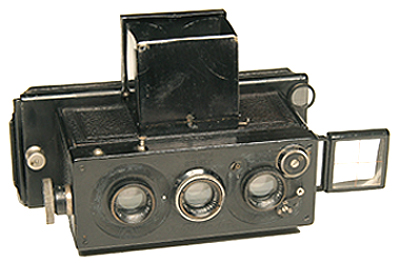
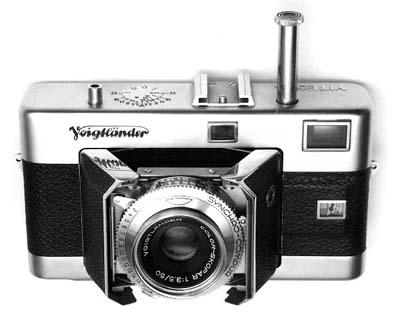
Stereoscopic camera + Vitessa camera
The Vitessa a is a special folding camera from 1950. It has a very remarkable design : a double 'barn-door' and a very long lever that combines the shutter release and the film winding.
In 1954 the A model is followed by the Vitessa N and the Vitessa L.
In 1957 the Vitessa T is marketed. This model must compete with the Kodak RETINA IIIC. This Vitessa T had the possibility ot switch lenses, but that made the camera a lot heavier and bigger. The Vitessa T thus is less elegant than the former models.
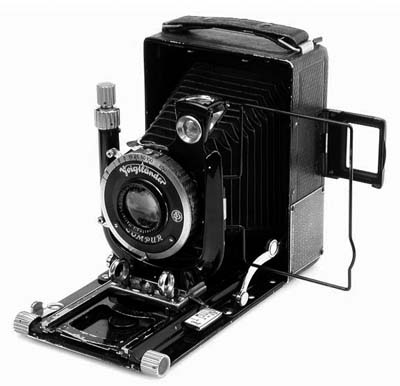
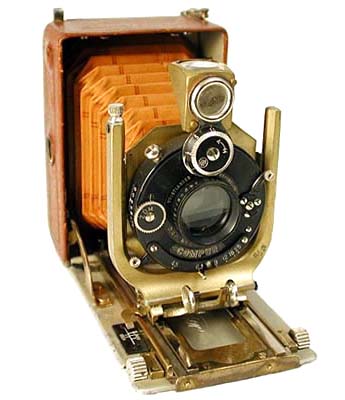
Bergheil + Bergheil de luxe camera

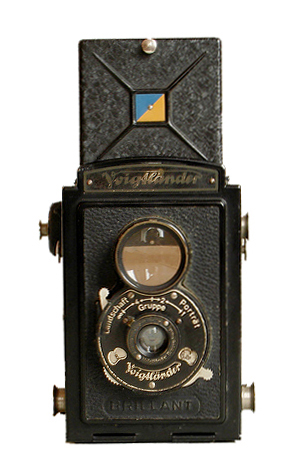
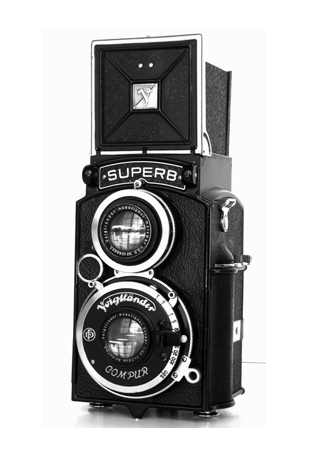
Folding Bessa + BRILLANT en SUPERB TLR

The BRILLIANT from 1932 looks a bit like the Rolleicord.
But with its very restrict possibilities it really is more a box camera with two lenses.
The next model from 1935 was a focusing Brillant.
The first Brillant cameras have metal housing but from 1935 on bakelite is also used.
The Voigtländer SUPERB was a real contestor for the Rolleicord.
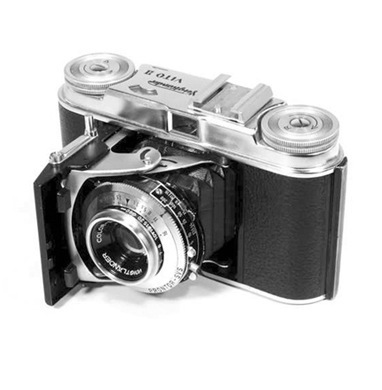
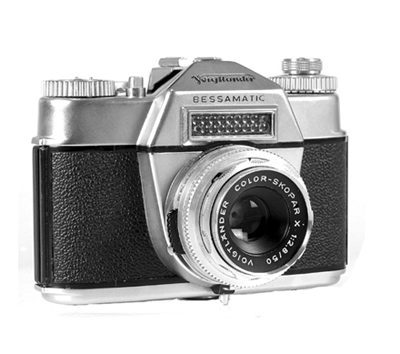
The Voigtländer VITO II and the Bessamatic
In 1940 Voigtländer makes its first 135 camera : the VITO I.
This is a folding camera and it was followed by the VITO II, IIa and in 1950 the VITO III.
The Bessamatic (1958) is Voigtländers first SLR camera.
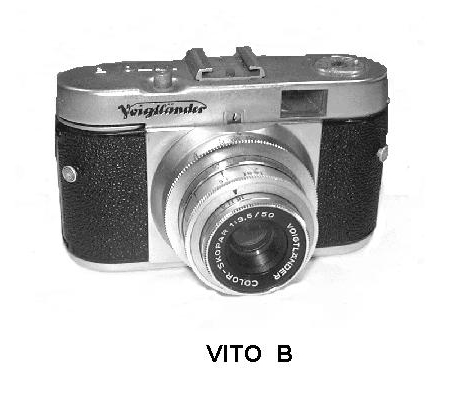
The VITO B from 1954 is a totally new concept.
This is a camera with a lens fixed to the camera body and it also is much smaller than the folding Vitos.
Later the VITO series also has the VITO BL en the Vito BR .
In 1963 the VITORET is introduced. This camera has some likeness with the VITO but the Vitoret cameras are less sophistiicated and much cheaper. So the Vitoret is intended for the photographer who cannot afford to buy a VITO.
Voigtländer as part of Rollei.
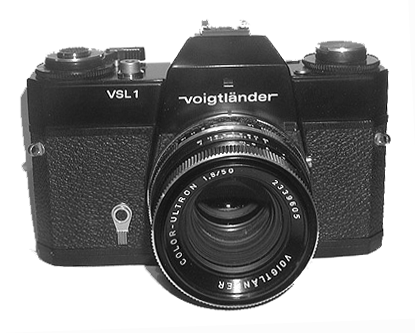 In 1974 the Voigtländer VSL1 was marketed. This SLR was made in Germany and had a chrome body and black or red leathering.
They also have "Made in Germany by Rollei" on the bottom plate. These VSL1 cameras have M42 thread mount. (TM)
This VSL1 is actually a Zeiss-Ikon SL 706 with slight changes and it is identical to the Rollei Ibaflex M 102.
In 1974 the Voigtländer VSL1 was marketed. This SLR was made in Germany and had a chrome body and black or red leathering.
They also have "Made in Germany by Rollei" on the bottom plate. These VSL1 cameras have M42 thread mount. (TM)
This VSL1 is actually a Zeiss-Ikon SL 706 with slight changes and it is identical to the Rollei Ibaflex M 102.That same year the production was brought over to Singapore. These VSL1 cameras are all black and are marked "Made in Singapore" on the bottom plate.
From 1975 to 1979 the VSL1 comes with the Rollei QBM bayonet mount (BM).
The Rollei SL35M is the same camera but with a rounded prism front and "diamond" rubber covering.
LENSES
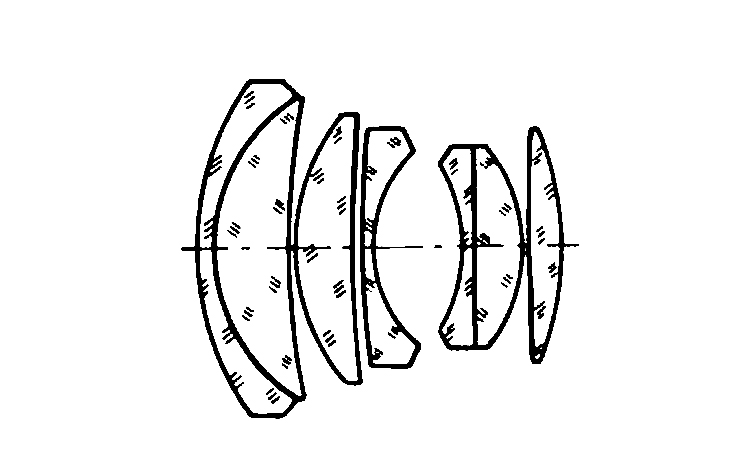
Voigtländer also made some remarkable lenses.
The most famous probably is the NOKTON 50mm f1.5 lens from 1951.
With its 7 elementen in 5 groups and splitted frontlens the NOKTON is regarded to be one of the best 50mm f/1.5 lenzen ever, better than the Leitz Summarit and certainly as good as the Zeiss Sonnar.
NOTE : Voigtländer and Zeiss-Ikon
In 1953 the Zeiss Foundation purchases Voigtländer und Sohne from the Schering Drug Company.
An important fact is that the Zeiss Foundation demanded that Voigtländer MADE MONEY, but they had to do so from their own resources, and Voigtländer lacked funds to invest in a lot of their ideas.
That huge hole in the bank-balance, the Contarex, started to tip Zeiss-Ikon into the red by 1956, and the ultimate fate was assured by 1959.
It is just a shame that the Zeiss Foundation insisted that Voigtländer be joined into the disaster, though, to be fair, the primary interest of the Zeiss Foundation in Voigtländer was acquiring their lens designers and their electronic shutter technology.
In the end, the Icarex and the Contaflex 126 were the sole contributions of Voigtländer to the Zeiss-Ikon line-up.
